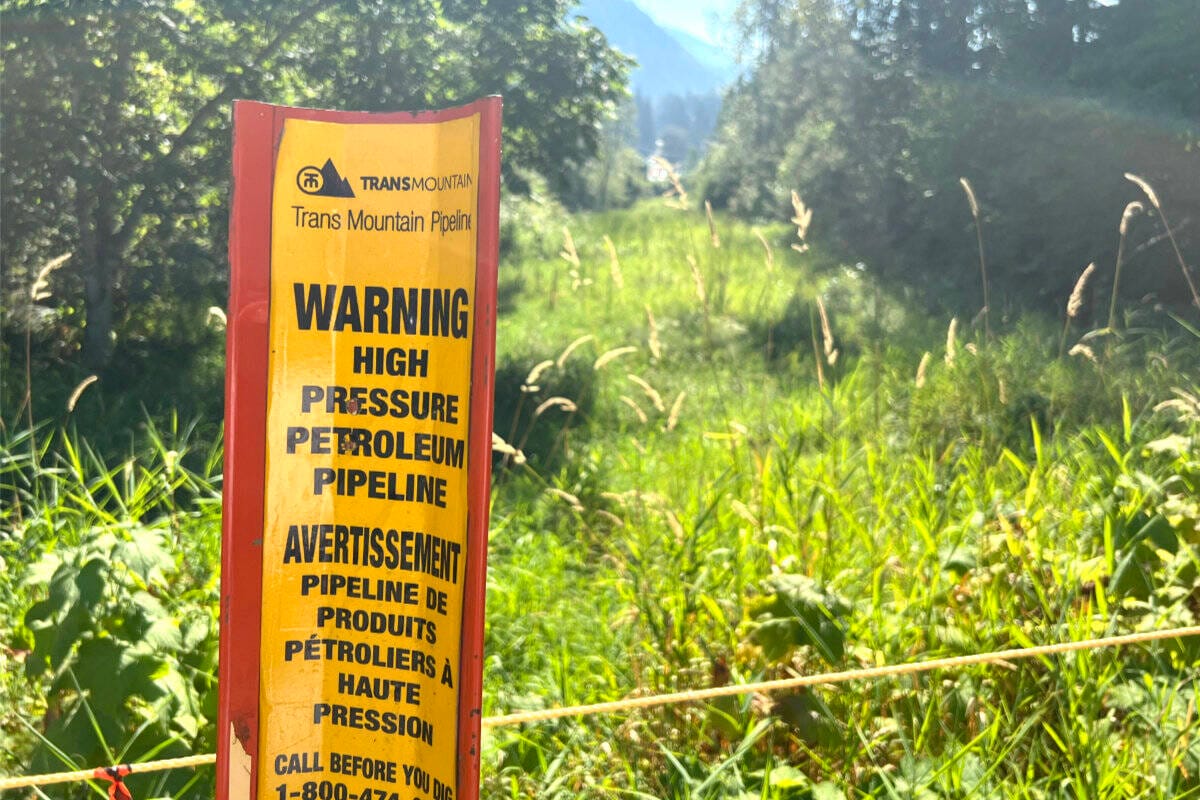A chilling sight: Red dress in the woods on Trans Mountain Pipeline route in the Eastern Fraser Valley
A reminder of Stó:lō history in the area while walking through woods looking for a salamander or an air along a controversial oil pipeline route
(This is a version of an op-ed I wrote that appeared in the Progress in September 2022 during construction of the Trans Mountain Pipeline Expansion Project after I had a truly spine-tingling experience walking through the woods - PJH, May 5, 2025)
As men and women with pickup trucks and Alberta licence plates rolled into communities from the Alberta oil sands to Burnaby to cut down trees and dig trenches for the Trans Mountain Pipeline Expansion Project (TMX), there was a resistance to the work from some Indigenous factions and, of course, from environmentalists.
A salamander here. An owl there. Mating woodpeckers near Bridal Veil Falls east of Chilliwack put a temporary stop to work back in June, 2022.
But all of this seemed somewhat futile at the time, and indeed stopped nothing.
When in the history of the modern world has an amphibian put the brakes on a multi-billion-dollar infrastructure project?
TMX was always going to happen whether we liked it or not, that a sentence I had to change to past tense because three years ago when I wrote most of this, I said the same thing in future tense. With billions of dollars on the line, and the government of Canada as the new owner, good luck using a bird’s nest or a salamander habitat as a reason to shut it down.
In August 2022, a press release from a persistent TMX opponent reiterated opposition to a decision allowing Trans Mountain to install the pipeline through a wetland near Bridal Veil Falls.

The press release came from Pipe Up Network, Protect the Planet, and the Community Nest Finding Network. The group said Trans Mountain denied their request to allow independent biologists into the wetland to document species at risk.
“This seems like a cover-up by Trans Mountain”, said Peter Vranjkovic of Protect the Planet. “While they claim to have all the important information, we found several errors and inconsistencies in their environmental plan and have requested that independent biologists go to the site and investigate the discrepancies.”
A biologist hired by the groups found several “threatened” and “endangered” species in the Bridal Falls area and connected waterways: coastal giant salamander, barn owl, Pacific water shrew, Oregon forestsnail and the Roell’s brotherella moss.
Because the surrounding area had mostly been clearcut, the groups said the value of this small wetland was even more crucial for nesting birds, amphibians, mature trees and rare species of plants, both of which are crucial to threatened barn owls.
Earlier that year, Vranjkovic filed a written complaint to the Canada Energy Regulator.
“I am not optimistic the complaints will change anything due to the conflict of interest. The pipeline is owned by the same people who control CER,” Vranjkovic said, pointing to the facts that CER is a government agency and Trans Mountain is owned by the government of Canada.
After I received the email, I was going to write it up, but I decided I needed to see for myself what they were talking about. Too often we sit at our desks to do our jobs, writing stories based on email and phone conversations, news releases and responses, but it’s crucial to get out and see what’s actually happening.
Anyone who has driven Highway 1 from Chilliwack to Hope in recent years saw the intense work on the TMX on the south side of the highway. In the Popkum/Bridal Falls area, the TMX crosses Highway 1 and goes across the Bridal Falls Golf Course.
I visited the wetland area in question by the environmental groups in August 2022, then I went up to Bridal Veil Falls Provincial Park. I parked in the public lot where the pipeline route is just a few feet away. I walked into the woods to see if maybe I could see a snail or a frog or a salamander. No such luck, but I wandered among a web-like array of short fencing girded by sandbags and TMX signage near the creek. The signs stated that there were amphibians in the area and that it was a water crossing for the pipeline.
There, among the fencing and stakes and flagging tape, on a coat hangar on the branch of a cedar tree right above the rushing water, was a red dress.
It gave me goose bumps. Like seeing a ghost. The red dress is of course a symbol to raise awareness about murdered and missing Indigenous women and girls in Canada.
It wasn't May, near red dress day, not that I would have been any less shocked to see a dress on a hangar in a tree.
It occurred to me at that moment that while environmentalists were opposing TMX work on a narrow stretch of land where it crossed sensitive ecosystems, there was and is a larger human story at play.
That whole area, this whole area, the entire length of the 1,180-kilometre pipeline, indeed all of this province has been home to Indigenous people for thousands of years before European colonizers arrived to plant crops, make roads, build railways, and, eventually, put pipelines in the ground.
The salamanders may have been here before the Stó:lō, but the Stó:lō have been here a heck of a lot longer than those of us descendants of European interlopers.
Mating woodpeckers were never going to stop TMX. And I figured at the time that maybe that red dress and what it symbolizes could do so, but probably not. Even if it didn't, I sure wouldn’t want to be the worker tasked with taking it down to get the oil flowing.
-30-
Paul J. Henderson
pauljhenderson@gmail.com
facebook.com/PaulJHendersonJournalist
instagram.com/wordsarehard_pjh
x.com/PeeJayAitch
wordsarehard-pjh.bsky.social
